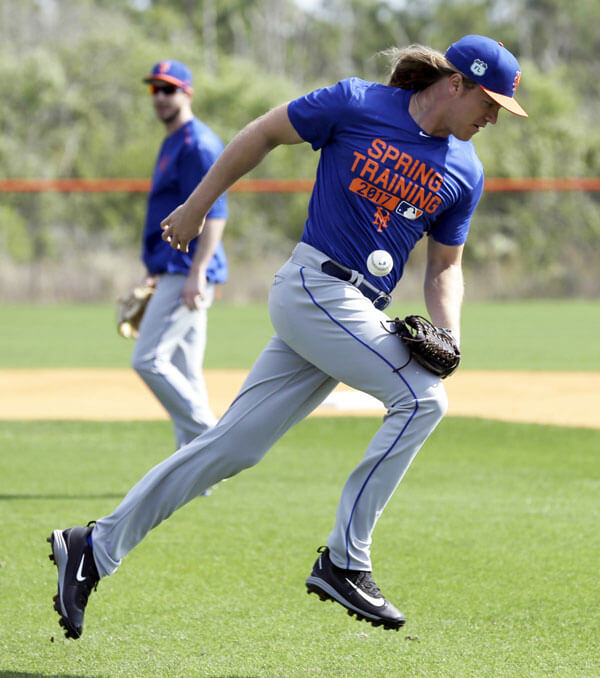By Zach Gewelb
It’s finally here. With the start of spring training last week, baseball is back.
And while last season did not end the way the Mets had hoped with a Wild Card defeat to the San Francisco Giants, the team is ready to turn the page as the 2017 campaign inches closer.
It’s no secret that New York was derailed by injuries last year – particularly with the starting rotation. But the start of a new season represents a new beginning for the Mets’ talented arms.
Noah Syndergaard was New York’s lone veteran starting pitcher to finish the year healthy, though he did so only by pitching through a bone spur in his right elbow after the team’s doctors chose not to operate. Syndergaard reported to camp, having added nearly 20 pounds of muscle, which he believes will elevate his already dominant fastball and overall repertoire. Syndergaard’s average fastball velocity ranked highest in the league last season and the thought of the Mets’ ace increasing his velocity is bound to worry hitters across the league if true.
Steven Matz is back after his 2016 season prematurely ended with surgery to remove a bone spur from his left elbow. Matz reported to camp early and in great shape, eager to put his injury behind him.
Jacob deGrom tossed just 148 innings in 24 starts last year and had an operation to correct a nerve issue in his pitching elbow. He is making early strides down in Port St. Lucie and a healthy deGrom slots well behind Syndergaard in the rotation.
Then there’s Zack Wheeler, who is attempting to come back from Tommy John surgery after nearly two years of rehabbing the injury. There has been a debate over whether or not Wheeler is best suited for the bullpen at this point – especially with the emergence of Seth Lugo and Robert Gsellman last season – but the right-hander has expressed interest in returning to the rotation.
And who could forget about the Dark Knight, as Matt Harvey looks to rebound from surgery for thoracic outlet syndrome.
There are a lot of concerns regarding the Mets’ rotation, but one thing is certain: If the quartet can remain healthy, New York will boast an elite rotation capable of taking the team deep into the playoffs and possibly back to the World Series.
Spring training is a time to be optimistic, but after just two weeks, we can already see how short-lived an optimistic approach can be. Wheeler has already had a setbackas reports have him experiencing tenderness in his elbow after a bullpen session.
The team announced it will take things slowly with Wheeler and the other rotation arms as they attempt to stay healthy throughout the spring.
But pitching isn’t the only area of concern for New York. There’s also the question of how to handle David Wright. The Mets’ captain is attempting to return and play through spinal stenosis, a condition that needs daily maintenance to keep Wright in playing condition. The injury will likely never disappear, and Wright’s playing time will depend on the captain’s pain tolerance.
Wright likely can’t offer much in the field at the hot corner anymore, so his performance at the plate would dictate playing time. Can the 34-year old, who has played just 75 games the past two seasons, come back to make a difference in 2017? The answer to that question will probably have a significant impact on the Mets’ season.
If Wright can remain healthy enough to provide 300 or so quality at-bats, the Mets’ chances of returning to October baseball – and doing some damage in the postseason – significantly improve.If not, New York will again have to rely on Jose Reyes and Wilmer Flores, who are not bad options by any means, but do not provide the same type of leadership and hitting ability as a healthy Wright.
This is the first edition of “High Heat,” a weekly column on the Mets. Reach reporter Zach Gewelb by e-mail at zgewe




































